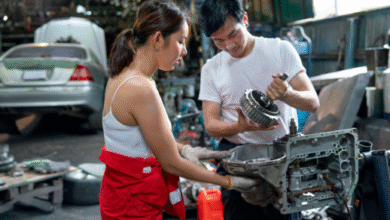Installing a racing harness without a harness bar or roll cage can be a bit challenging because these components are typically used to secure the shoulder straps of the harness at the correct height and angle. However, it is still possible to install a racing harness in some vehicles without a harness bar or roll cage if you follow these general guidelines. Please note that proper installation is crucial for your safety, so consult a professional if you have any doubts or if your vehicle’s design allows for it.
Materials You’ll Need:
- Racing harness set (includes lap belts, shoulder belts, and crotch strap)
- Seat with harness pass-throughs (optional)
- Seatbelt bolt-in harness brackets (optional)
- Hardware (bolts, nuts, washers)
- Socket wrench and sockets
- Torque wrench
- Measuring tape
- Screwdriver
Step-by-Step Guide:
1. Check Local Regulations:
- Verify that racing harnesses are legal and compliant with your local regulations for use on public roads.
2. Install Racing Seats (Optional):
- If you are installing racing seats with harness pass-throughs, make sure they are securely bolted to the vehicle’s floor following the manufacturer’s instructions.
3. Choose the Correct Anchoring Points:
- Identify the anchor points in your vehicle where you can secure the harness. These points should be structurally sound and able to handle the load generated during an impact.
4. Install Harness Brackets (Optional):
- If your vehicle does not have integrated harness pass-throughs in the seats, you may need to install seatbelt bolt-in harness brackets. These brackets attach to the vehicle’s structure and provide anchor points for the harness straps.
5. Mount Lap Belts:
- Secure the lap belts of the harness to the appropriate anchor points. These points are typically located near the base of the seats or on the vehicle’s floor.
6. Mount Shoulder Belts:
- This is where it gets challenging without a harness bar or roll cage. Mount the shoulder belts to anchor points on the rear bulkhead or another structural part of the vehicle. Make sure they are at the correct height and angle to ensure a snug and safe fit.
7. Check Belt Angle:
- The shoulder belts should be at an angle of about 45 degrees downward from the harness attachment point on the rear bulkhead to the attachment point on the harness itself. Adjust the angle if necessary to achieve a proper fit.
8. Install Crotch Strap:
- Secure the crotch strap to the appropriate anchor point on the vehicle’s floor. Ensure it is snug but not overly tight.
9. Tighten and Torque:
- Use a torque wrench to tighten all bolts and nuts to the manufacturer’s specified torque values. Ensure that all hardware is secure.
10. Adjust Straps:
- Adjust the harness straps to achieve a snug and comfortable fit. The lap belts should sit low across your hips, and the shoulder straps should be secure but not overly tight.
11. Test and Adjust:
- Sit in the seat and test the harness by simulating the driving position. Adjust the straps as needed to ensure a proper fit.
12. Double-Check:
- Before using the harness on the track or for racing, double-check that all bolts, nuts, and harness straps are properly secured.
Please note that while it is possible to install a racing harness without a harness bar or roll cage, these components are highly recommended for safety and optimal harness performance. If you frequently participate in racing events, consider consulting a professional or installing additional safety equipment as needed to ensure your safety on the track.
Also Read:
https://infusionpost.com/how-to-install-a-southern-home-security-system/
https://infusionpost.com/how-to-install-a-strip-pole-at-home/
https://infusionpost.com/how-to-install-a-window-in-a-trailer/
https://infusionpost.com/how-to-install-aluminum-pan-roof/
https://infusionpost.com/how-to-install-an-above-ground-pool-ladder/



